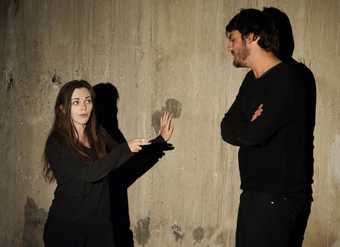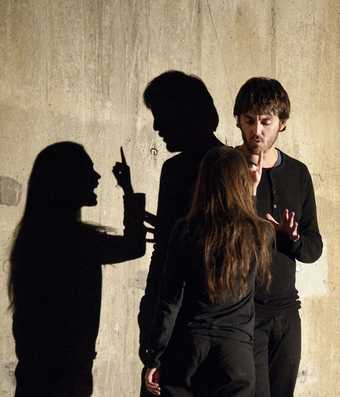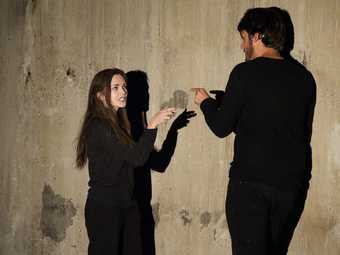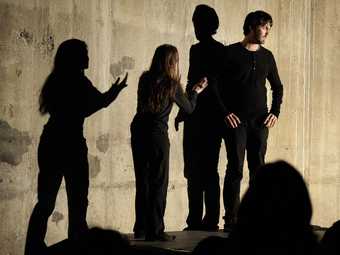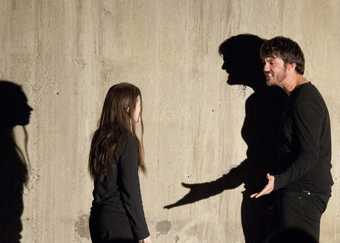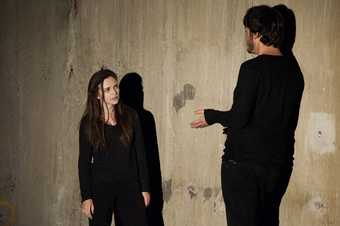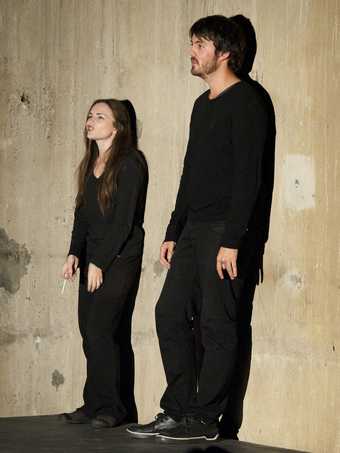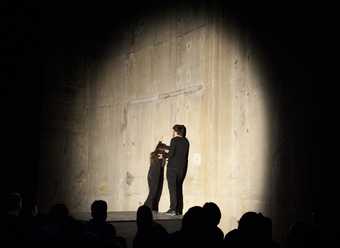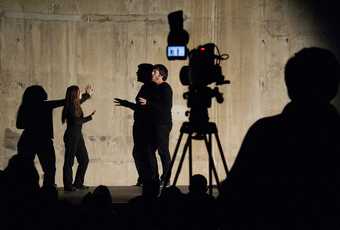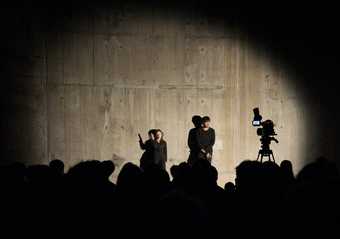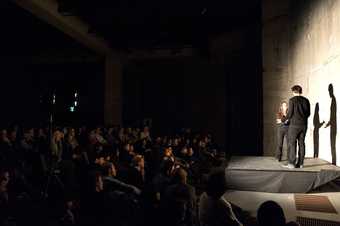To mark the 2012 opening of the Tanks, Tate Modern’s dedicated live art space, a number of artists working across film, installation, new media, performance, and other live art forms were invited to present works. These comprised a number of historical artworks, as well as new pieces developed specially for the space. In addition, a variety of participatory and educational events were presented, including the symposium Playing in the Shadows, which took place on 26–27 October in the Starr Auditorium and was accompanied by an illustrative programme of four performances by Tina Keane, Patrick Staff, Kerry Tribe and Aura Satz in the Tanks. The symposium included talks and papers from a number of speakers, highlighting the work of scholars exploring expanded media and intersections between art, film and the live event. In particular, they focused on artists’ use of illumination and darkness, as a response to the unique spaces of the Tanks at Tate.
In Critical Mass, Kerry Tribe took artist Hollis Frampton’s 1971 film of the same name and transformed it into a live performance. Working with two other artists – Emelie O’Hara and Nick Huff – Tribe had them learn the full dialogue of the original film, which showed an improvised domestic argument between a couple. Where Frampton had then used editing techniques to overlay and fragment the dialogue, creating a stuttering soundtrack to accompany the images, Tribe had her actors imitate this frenetic dialogue precisely, including pauses, overlaps and interruptions, thus creating a live-action version of Frampton’s edited film. While their movements remained the same as those of the original 1971 actors, they created the edits applied by Frampton in post-production during the action itself.
Simple, stark lighting, which contrasted with the darkened environment of the Tanks, created the screen on which they performed. In working from the projection as her source material, Tribe reversed the linear temporality of performance to film, from live act to document, and instead experimented with the possibility that an edited film, which was already the manual or digital manipulation of a live performance, could be recreated in the bodies of actors.
Clare Gormley
October 2015

